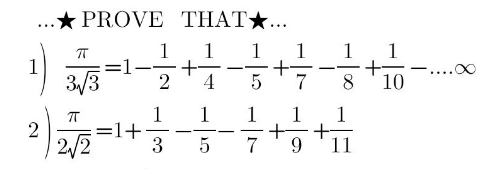
AllQuestion and Answers: Page 1094
Question Number 108750 Answers: 2 Comments: 0
Question Number 108749 Answers: 2 Comments: 0
Question Number 108748 Answers: 1 Comments: 0

Question Number 108757 Answers: 1 Comments: 0
Question Number 108741 Answers: 2 Comments: 0
$${Solve}\:{x}^{\mathrm{3}} −\left[{x}\right]=\mathrm{3} \\ $$$$\left({x}\in{R}\right) \\ $$
Question Number 108738 Answers: 0 Comments: 0
Question Number 108728 Answers: 1 Comments: 0

Question Number 108727 Answers: 1 Comments: 0

Question Number 108725 Answers: 1 Comments: 0
Question Number 108723 Answers: 2 Comments: 1

Question Number 108721 Answers: 0 Comments: 0

Question Number 108719 Answers: 0 Comments: 0

Question Number 108718 Answers: 0 Comments: 0

Question Number 108711 Answers: 1 Comments: 0
Question Number 108710 Answers: 0 Comments: 1
Question Number 108706 Answers: 0 Comments: 0
Question Number 108705 Answers: 1 Comments: 0
Question Number 108699 Answers: 0 Comments: 0

Question Number 108698 Answers: 0 Comments: 0

Question Number 108697 Answers: 1 Comments: 0

Question Number 108692 Answers: 2 Comments: 0

Question Number 108690 Answers: 0 Comments: 0

Question Number 108688 Answers: 0 Comments: 4
Question Number 108680 Answers: 0 Comments: 1

Question Number 108679 Answers: 1 Comments: 0

Question Number 108678 Answers: 2 Comments: 0

Pg 1089 Pg 1090 Pg 1091 Pg 1092 Pg 1093 Pg 1094 Pg 1095 Pg 1096 Pg 1097 Pg 1098
